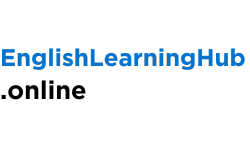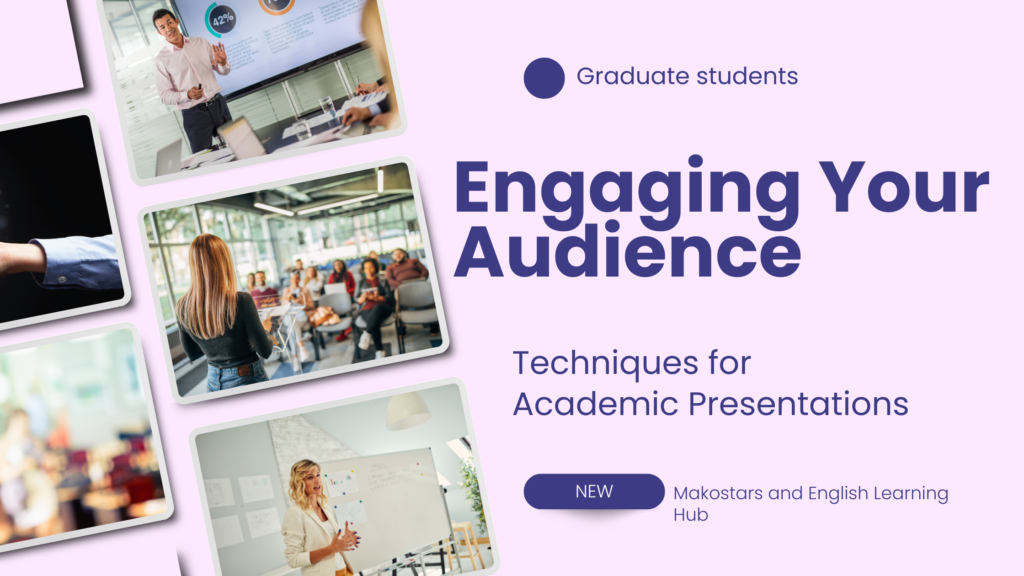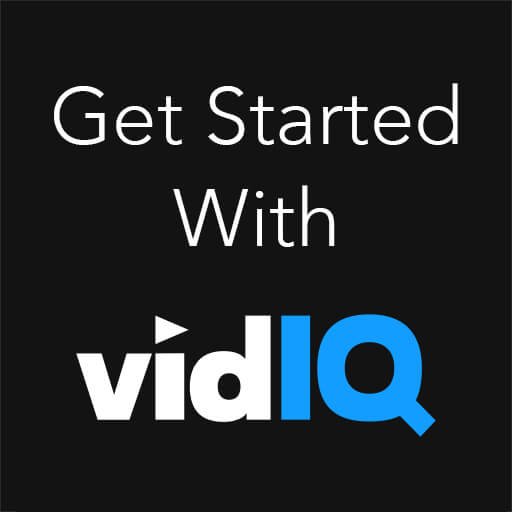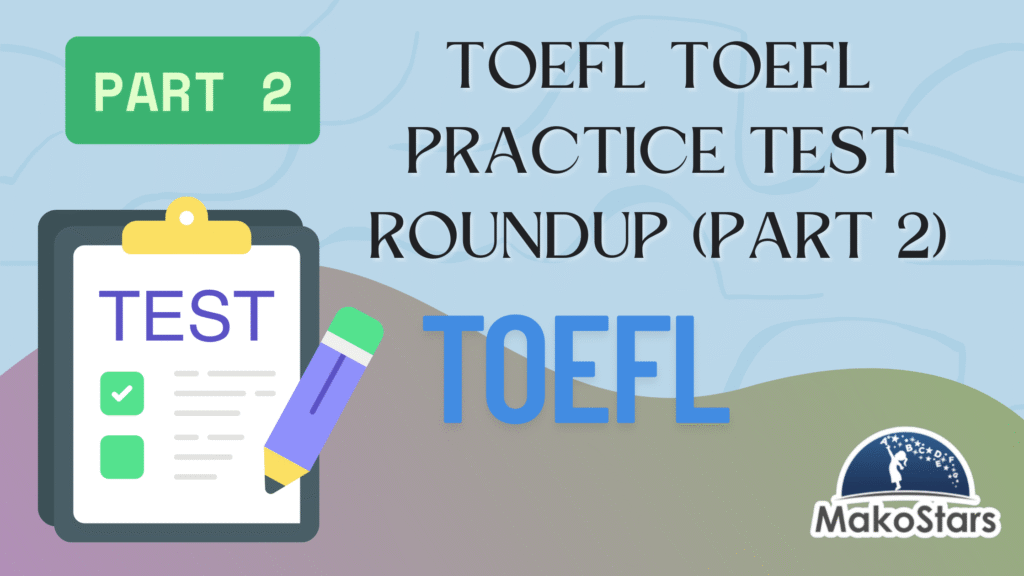Boost Audience Engagement in Academic Presentations ESL
Table of Contents
Introduction
Academic presentations usually require speakers to not only express the topic well but also maintain audience engagement throughout.
The requirement is much more grueling for ESL (English as a Second Language) students, who would have to overcome the linguistic barriers in presenting their ideas.
This comprehensive guide would look into practical techniques for attaining and retaining your audience’s attention in academic presentations, bringing about a sense of confidence and betterment in communication skills.

Comprehending Audience Engagement in Academic Presentations
Audience engagement involves making the audience feel interested and emotionally connected to your content, further encouraging audience participation. Engaged audiences can better recall information, raise questions, and give constructive suggestions.
Why Audience Engagement?
Increases Retention: If an audience participates actively in the content they are supposed to connect to better.
Improves Interaction: Listeners who connect are more inclined to take part in conversations or Q&A sessions.
Reduces Anxiety: For speakers, an attentive audience often gives confidence.
How You Can Know Your Audience?
Before you get started preparing your presentation, get to know who your audience is going to be.
- Do they work as professors, researchers, or students?
- How much are they familiar with your topic?
- Do they belong to another culture or have limited proficiency in English, as in ESL audiences?
The better you understand their needs and expectations, the better your message will reach them.
Methods to Engage Your Audience
Hook Your Audience
The opening moments of your presentation are the most important. This is a chance to attract attention, set an audience connection, and establish the tone for the entire session.
A well-crafted hook not only catches interest but also makes the audience listen carefully to what follows. The objective is to make an impact right away so that your audience remains interested and involved with your content.
Examples of Effective Hooks
- A Personal Story: Share a personal experience that will make your presentation memorable and relatable. While discussing climate change, you can narrate how it has affected your hometown and share it with your audience.
- Share a Surprising Fact: Start with an interesting statistic or fact to grab attention, like, “The average person spends over 7 hours daily on digital media.”
- Ask a Thought-Provoking Question: Use questions like, “What five words would you choose if they were the only ones you could speak?” to spark curiosity.
The practice of ESL students in such openings ensures a value of confidence and the right tone.
2. Organize Your Presentation Well
A well-organized presentation is the foundation for effective communication. When your information is logically ordered, the viewer can more easily follow your arguments, understand your important points, and remain engaged throughout. Disorganized presentations, on the other hand, may confuse your audience, resulting in a lack of interest and reduced effect.
The Three-Part Framework
Introduction:
- Present the objective of your presentation.
- Provide a quick overview of the points you will cover.
Body:
- Organize your content into clear sections.
- Use subheadings or signposting language, such as “Next, we’ll talk about…” to help steer the audience through your presentation.
Conclusion:
- Summarize key takeaways.
- End with an appealing closing statement, such as a call to action or an inspiring thought.
- Using simple language and creating a smooth flow between the different sections of the presentation with some clear-cut transitions can help even ESL students.
Why Presentation Structure Matters
- Clarity: A clean structure allows the audience to take in your thoughts with minimal effort.
- Retention: Logical flow improves information retention because ideas build on one another.
- Engagement: A well-organized presentation keeps listeners interested by easily transitioning from one topic to the next.
- Professionalism: A planned presentation shows preparation and trust, which increases your authority as a speaker.

3. Visual Aids
Visual aids are effective tools that supplement your spoken words, making your presentation more entertaining, understandable, and remembered.
They act as a link between your vocal communication and your audience’s awareness, allowing you to bring out important points, explain difficult ideas, and maintain interest. A smart use of images can transform an average presentation into a powerful one.
Visual Aids Best Practices
- Simplify your slide: Instead of using long sentences, use bullet points. Use six lines each slide and no more than six words per line.
- Use High-Quality Graphics: Charts, graphs, and images should be clear and relevant. Do not overwhelm slides with graphics that aren’t necessary.
- Use Multimedia Elements: Short video clips, animations, or GIFs can help explain difficult concepts.
To an ESL presenter, visuals provide prompts as well, so most pressure is released to remember everything. They act as a support system for guiding the flow of the presentation.
Why Are Visual Aids Important?
- Break the routine: Long periods spent listening to a speaker can get boring. Visual aids keep your audience engaged while offering variety.
- Improve Understanding: When difficult data, statistics, or abstract concepts are presented visually, they become easier to understand.
- Improve Retention: When information is delivered in the form of both words and visuals, people are more likely to focus.
- Highlight Key Points: A well-placed image or chart can convey your point more effectively than words alone.
4. Effective Communication Methods
Good communication is beyond the ideas you are to convey. Rather, it is how you say it. This involves the art of making your message easy to understand and interactive to your audience.
Communication can be categorized as verbal and nonverbal; both of them are crucial in the process of ensuring that your presentation reaches your audience. Concerning and applying these methods makes it possible to communicate with listeners much deeper and leave a meaningful impression.
Verbal Communication Methods
Vary Your Voice: Don’t talk in a monotone. Let your voice rise and fall for emphasis or show you’re excited.
Pause for Pausential Effect: Pauses can give your audience time to assimilate information and add dramatic effect when used in some measure.
Use Plain English: Avoid technical terms and wordy sentences when communicating with academic audiences, except those who speak English as a second language.
Non-Verbal Communication Methods
- Make Eye Contact: It helps build trust and credibility.
- Use Body Language Gestures: Hand gestures can be used for extra emphasis on points, but do not overuse them.
- Smile: A natural smile breaks the ice and creates a warm, pleasant contact.
These skills can be developed by recording themselves and then analyzing their delivery or having a practice session with fellow peers for constructive feedback.

5. Tell Them Story
The best presentation techniques to keep your audience interested are those that use stories.
Simply incorporating a story into your presentation can transform seemingly abstract concepts into clear, special experiences. People are emotionally connected to stories, which increases the impact and recall of your material. In academic environments, where facts and numbers are often dominant, the narrative provides a human element that keeps listeners interested in your message.
How to Use Storytelling in Academic Presentations?
- Personal Stories: Share anecdotes from your own life that tie into the topic.
- Case Studies: Give cases from everyday life to support your claims. For instance, if presenting on renewable energy, highlight a successful solar project in a specific community.
- Hypothetical Scenarios: Create scenarios that help your audience imagine the application of your ideas.
Even if English isn’t your first language, simple storytelling techniques can work wonders. Focus on clarity and emotion rather than complex vocabulary.
6. Encourage Interaction
Interactive presentations do more than just communicate information; they connect with the audience, creating a sense of involvement and participation.
By supporting participation, you change the situation from passive listening to active cooperation, making sure your message is received more successfully. Interactive methods can hold the audience’s attention, break up the routine of a one-sided presentation, and provide a memorable experience.
Why Interaction Matters
- Promotes Engagement: Because participants are more likely to pay focus, interactive sessions keep the audience focused for longer periods of time.
- Facilitates Learning: Active participation in conversations or activities improves an audience’s memory and information-processing skills.
- Promote Connection: Interaction develops a two-way communication channel between the presenter and the audience, increasing their bond.
- Responds to Different Learning Styles: Some people learn better by doing or discussing rather than just listening. Interactive approaches appeal to these habits.
Interaction Methods
- Ask Questions: To interact with the audience, use rhetorical questions or direct questions to persons.
- Use Polls or Surveys: In an online environment, tools such as Mentimeter or Kahoot can facilitate real-time audience participation.
- Hold Discussions: Small group discussions or short Q&A can refresh the audience’s participation status.
While ESL students may feel nervous and worried about getting everything right, rehearsing these interactions beforehand can reduce nervousness and ensure smooth execution.

7. Make Effective Use of Body Language
Body language is a key but often overlooked component of helpful communication. It complements your spoken words, reflects confidence in speaking, and helps to make a solid connection with your audience. Your presentation can be improved and made more memorable by using body language skillfully.
Key Body Language Tips
- Posture: Maintain an upright posture and avoid leaning on the stage.
- Gestures: Use your hands to stress points, and avoid fidgeting.
- Movement: Create a dynamic presence by walking around the stage; avoid pacing aimlessly.
For ESL students, rehearsals in front of a mirror or recording their presentations can be useful in discovering weaknesses.
8. Adjust Content for ESL Audiences
When presenting presentations to ESL (English as a Second Language) audiences, you must customize your material and delivery manner to their specific needs.
The purpose is to ensure clarity, avoid misconceptions, and promote participation, regardless of the audience’s English skills.
Tips for ESL-Friendly Content
- Keep Language Simple: Avoid idioms, slang, or culturally specific references that might confuse non-native speakers.
- Speak at a Polished Pace: This helps ESL listeners better understand the information.
- Visual Help: Handouts, slides, or written summaries can support the verbal content.
Such an approach ensures that no listener, regardless of language, is left disinterested.
9. Achieve Confidence in Public Speaking
The cornerstone of effective public speaking is confidence. Regardless of how well-prepared or smart your information is, if it isn’t delivered confidently, the message may lose effect.
Confidence inspires trust, develops status, and keeps your audience interested. Developing this confidence needs preparation, practice, and psychological readiness.
Tips for Confidence
- Know Your Material: The worry of forgetting important details is relieved by material knowledge.
- Rehearse Often: Practice in front of friends, family, or a mirror.
- Focus on Positivity: Remind yourself of past successes to build self-belief.
For ESL students, speaking clubs such as Toastmasters are great places to receive supportive practice.
10. Overcome stress Positively
Nervousness is a natural reaction to speaking, particularly for ESL students who may feel extra pressure about their pronunciation, grammar, or fluency. Instead of viewing Concern as a flaw, it might be viewed as a sign of attention and dedication to making an impactful presentation.
Stress may be controlled and even transformed into a source of focus and energy if the right methods are used.
Effective Strategies to Cope with Stress
- Relaxation Techniques: Deep breathing or mindful exercises may help soothe one’s nerves before speaking.
- Preparation for Questions: Anticipating likely questions leads one to develop confidence in responding.
- Embracing Mistakes: Rather than fearing mistakes, consider them as a chance to learn and improve.
Over time, repeated practice and positive feedback will reduce stress and increase your comfort with speaking.
The Role of Technology in Enhancing Presentations
In today’s fast-moving digital environment, technology plays a major role in improving the benefits and interest of academic lectures. When used correctly, technology can turn a normal presentation into an exciting, interactive experience that attracts the audience and improves the content being presented.
Technology provides tools that help ESL students communicate more efficiently and confidently.
Tools to Consider
- Presentation Software: PowerPoint, Canva, and Prezi are great for designing visually appealing slides.
- Interactive Platforms: Use tools like Slido or Poll Everywhere to cheer audience participation.
- Language Aids: Apps such as Grammarly or Pronunciation Coach can help prepare scripts for ESL students.
Using these aids effectively can improve the content of your presentation as well as its delivery.

Conclusion
Connecting an audience in an academic presentation is a skill that takes preparation, practice, and flexibility. From developing a great opening to using narration and graphics, every technique builds on further ability to engage with your audience.
The same techniques can help ESL students develop language competence and fluency in speaking. With such techniques, you’ll learn to make your presentations “stick” in people’s minds and be remembered after a presentation is made.
Never forget that every presentation is a learning experience. So approach it with confidence and enthusiasm!




![12 Basic Grammar Rules to Write Like a Pro [2025 Guide]](https://englishlearninghub.online/wp-content/uploads/2025/07/12-Basic-Grammar-Rules-to-Write-Like-a-Pro-2025-Guide-1024x576.png)

